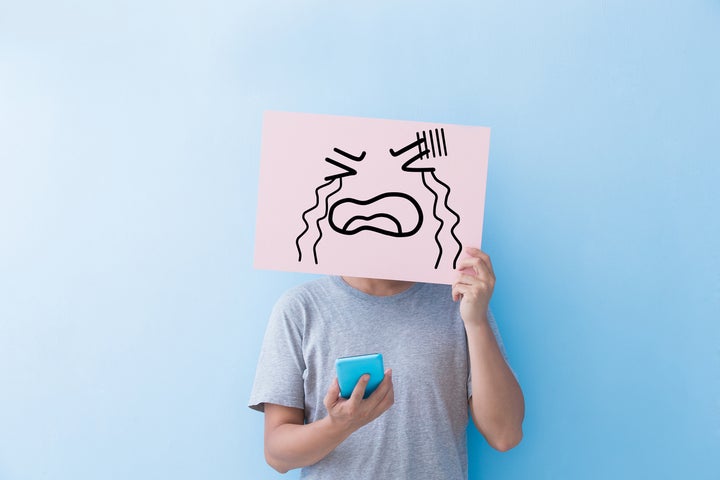
The National Comprehensive Cancer Network® (NCCN®), a not-for-profit alliance of 27 of the world’s leading cancer centers, this week unveiled the NCCN Guidelines for Patients®: Distress, the latest in its library of patient education materials. The guide, supported by a grant from Good Days, helps oncologists ask about emotional problems and aims to make patients feel comfortable talking about them.
I sat down with Jimmie C. Holland, MD, Chair, and Teresa L. Deshields, PhD, Vice Chair of the NCCN Clinical Practice Guidelines in Oncology Panel for Distress Management to discuss the causes of patient distress and what we can expect from the new NCCN Guidelines.
Why did NCCN feel it important to publish guidelines for distress? Is this an issue that oncologists and patients need assistance to address?
JH: While the stigma attached to cancer is less so today than it was in the past, there is still a stigma attached to psychological or mental problems, even when they are understandable in the context of coping with cancer. NCCN recognized this and invited me to help them address the knotty problem of why it was so hard to encourage that discussion. They appointed a panel to study the problem and we found both patients and oncologists did not like the words “psychological” or “psychiatric”– but the word “distress” was fine because it was clearly normal to be distressed and it could vary in how bad it was.
Thus, we developed the Distress Thermometer, which asks from 0-10, what is your level of distress? We found that 4 or more was the cut off for indicating a level of distress that should be evaluated further as to its nature and cause by a member of the cancer care team. The Problem List helps the team member to see whether the person needs psychological, social or spiritual help.
Have the sources of distress surrounding cancer changed over time?
JH: Cancer treatments have changed with precision medicine and the side effects to which people are responding are different, but human emotions don’t change. Overall, it’s a more friendly environment in which to have cancer today than 30 years ago, when it was stigmatized. We have had the idea that if every oncology clinic posted the NCCN Distress Thermometer poster on their wall it would make the topic seem ordinary and not unusual. I’d love to see a poster in every clinic, like an eye chart.
TD: With today’s push for patient-centered care, it should be getting easier for oncologists and patients to talk about distress and for oncologists to ask about it. Hopefully, we’re moving away from “the tyranny of positive thinking,” as Jimmie writes about in her book.
That’s an interesting phrase. What exactly is “the tyranny of positive thinking?”
JH: There has been a common response in the past by people who will tell someone with cancer that “You have to be positive to beat cancer.” It’s not possible to be positive all the time, and it doesn’t mean you are not fighting cancer when you feel sad or distressed. It means you can use some support. We have called this the “tyranny of positive thinking” which is less relevant today as people better understand coping with illness.
If a patient reports a distress level above a 4, are the programs to which they’re referred typically covered by insurance?
JH: It depends on each institution. Some places provide free psychosocial care, others are on their own. It’s an enormously big problem because reimbursements for mental health services are dreadfully low. Many providers can’t afford to accept it. It makes mental health services limited. The mental health parity act passed a few years ago hasn’t been implemented. The good news is that for many people who score above 4, when you chat with them they feel better, so only about a third who score 4 or above actually need further help.
Who are the most appropriate professionals to address sources of patient distress?
TD: Distress can reflect physical, emotional, social problems, and so on. It’s helpful to have the range of supportive services in house to address these problems, but if not, then to have referral services available. Some offer them for free, and some don’t. Others have a lot of variability. Oncologists can often address the physical sources of distress. We’re used to managing pain, fatigue and insomnia. I’m working with oncologists to help them feel more comfortable addressing the psychological sources of distress.
The NCCN Guidelines for Patients®: Distress is available for free at NCCN.org/patients.
Jimmie C. Holland, MD is chair of the NCCN Guidelines Panel for Distress Management and the Wayne R. Chapman Chair in Psychiatric Oncology, Memorial Sloan Kettering Cancer Center in New York City.
Teresa L. Deshields, PhD, ABPP, is vice-chair of the NCCN Guidelines Panel for Distress Management and manager of the Counselling Service at the Siteman Cancer Center at Barnes-Jewish Hospital and Washington University School of Medicine.
Clorinda Walley is the Executive Director of Good Days, a national, independent 501(c)(3) non-profit charitable organization that provides financial assistance to patients so that they do not have to choose between access to medicine they need and affording everyday living. Since 2003, Good Days has provided more than 800,000 grants and helped more than 500,000 people with access to healthcare resources. For more information about Good Days, visit www.mygooddays.org.
